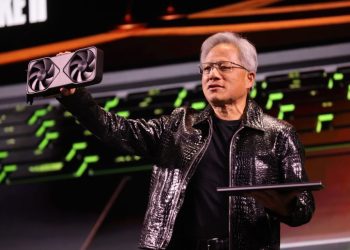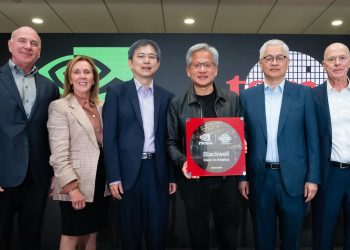Samsung has announced a groundbreaking partnership with Nvidia to accelerate the development and deployment of AI-driven Radio Access Networks (AI-RAN). This collaboration aims to optimize mobile network efficiency and performance by integrating Nvidia’s advanced computing platforms with Samsung’s virtualized solutions.
The initiative was showcased at MWC 2025, where Samsung demonstrated its real-world vRAN (Virtualized Radio Access Network) technology running on Nvidia’s AI-powered infrastructure.
Understanding AI-RAN and Its Importance
Radio Access Networks (RANs) serve as the connection point between mobile devices and the broader telecommunications infrastructure. With the rise of 5G and upcoming 6G networks, the need for intelligent, adaptive, and efficient networks has become more critical than ever.

Key Benefits of AI-RAN Technology
- Enhanced Network Performance: AI can optimize real-time traffic management and allocate resources efficiently.
- Improved Spectrum Utilization: AI-driven algorithms enhance spectral efficiency, allowing carriers to maximize available bandwidth.
- Reduced Energy Consumption: Intelligent AI-based solutions can lower power usage by dynamically adjusting network operations.
- Scalability Across Different Environments: AI-RAN adapts to rural, suburban, and dense urban deployments, ensuring consistent connectivity across different landscapes.
Samsung and Nvidia’s Technological Integration
Nvidia’s Role: AI and Accelerated Computing
Nvidia brings its expertise in AI computing to the partnership, leveraging its:
- Grace CPU and AI GPUs to power AI-driven network functions.
- AI software stacks that improve data processing, automation, and predictive analytics.
Samsung’s Contribution: vRAN and Network Optimization
Samsung’s virtualized RAN (vRAN) technology enables operators to deploy flexible and software-driven network solutions, replacing traditional hardware-based network functions.
The Combined Impact
By integrating Nvidia’s AI computing with Samsung’s vRAN, telecom operators can build networks that are:
- Smarter – Adapting to network demands in real-time.
- More Efficient – Minimizing operational costs.
- Future-Ready – Paving the way for AI-powered 6G advancements.
Industry Leaders Weigh In
Samsung’s Vision for AI in Telecom
June Moon, Executive Vice President and Head of R&D, Networks Business at Samsung Electronics, highlighted the importance of AI in future networks:
“While AI is reshaping the telecommunications landscape, Samsung is helping operators to build the right network architecture and environment where AI can thrive, all powered by our proven and AI-powered vRAN.”
Nvidia’s Perspective on AI-RAN
Ronnie Vasishta, Senior Vice President for Telecom at Nvidia, emphasized how AI will redefine mobile networks:
“AI-RAN is a critical technology that delivers transformative gains in network utilization, efficiency, and performance while enabling new AI services.”
What This Means for the Future of Telecom
This partnership marks a significant milestone in the evolution of mobile networks. By leveraging AI, Samsung and Nvidia are working toward:
- Optimizing 5G deployments and preparing for 6G.
- Reducing latency and enhancing connectivity in remote areas.
- Driving AI-powered applications such as autonomous networks, predictive maintenance, and real-time analytics.
As AI continues to shape the future of telecommunications, this collaboration sets the foundation for next-generation, intelligent mobile networks that will redefine connectivity worldwide.
Conclusion
Samsung and Nvidia’s partnership in AI-RAN represents a major step forward in the convergence of AI and telecommunications. By integrating advanced AI computing with virtualized networks, they are pioneering the future of mobile networks, ensuring faster, more efficient, and more intelligent connectivity solutions.
This collaboration is expected to redefine global telecom infrastructure, setting the stage for the next wave of AI-driven innovations in mobile networks.








